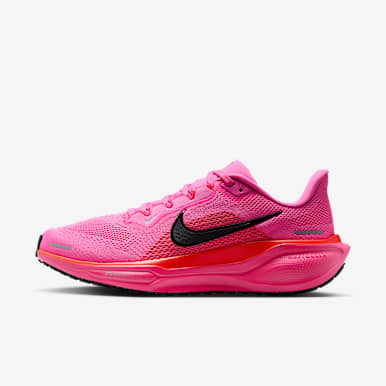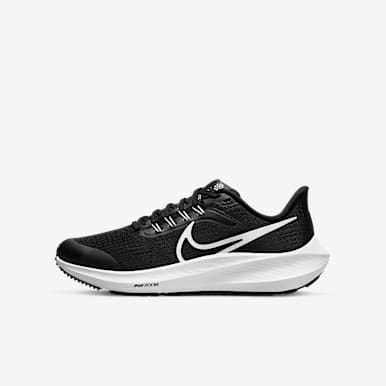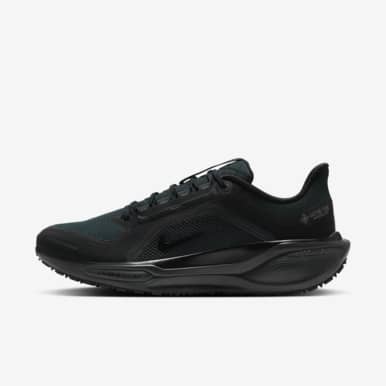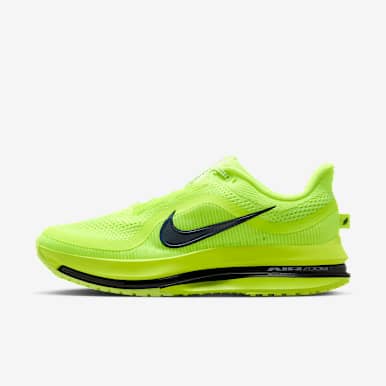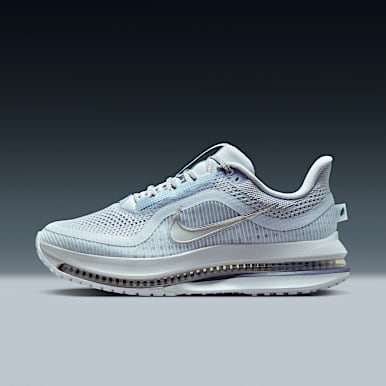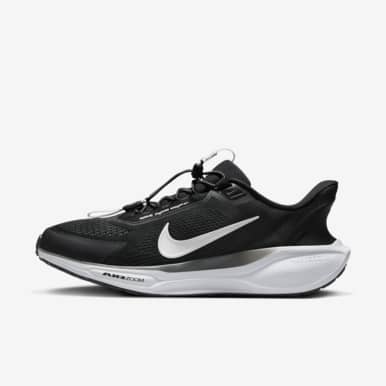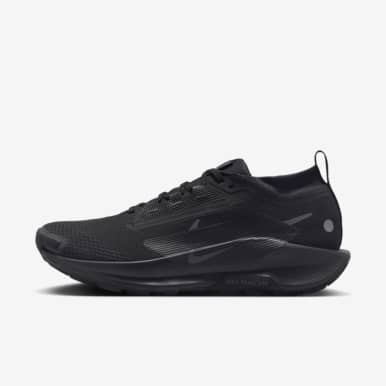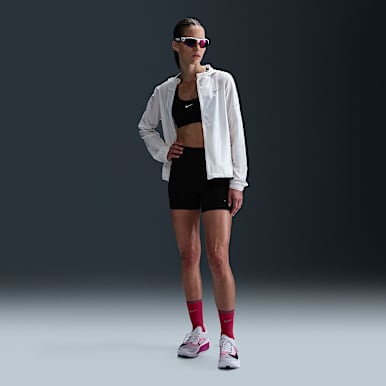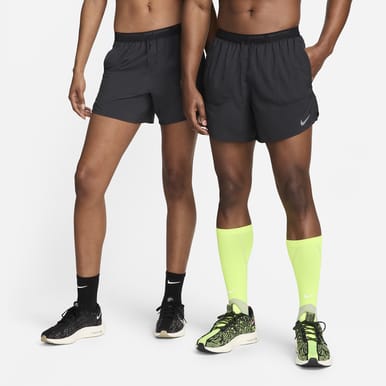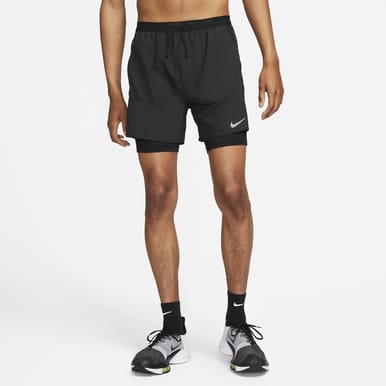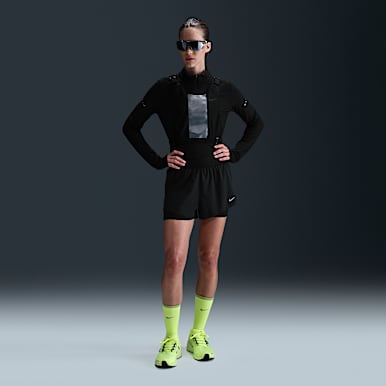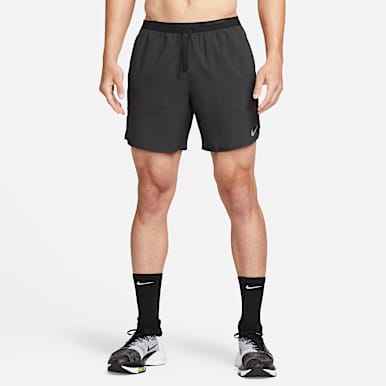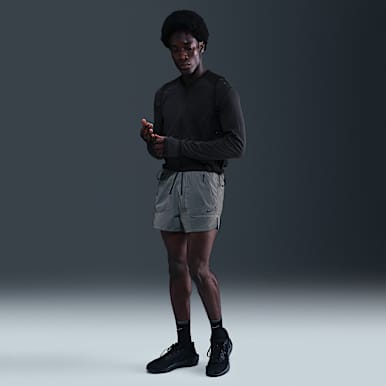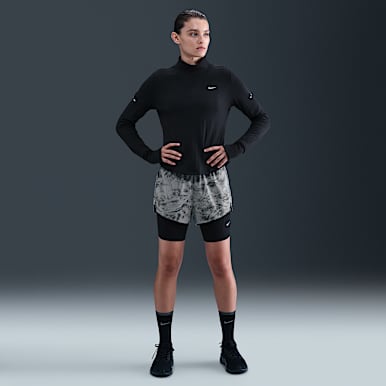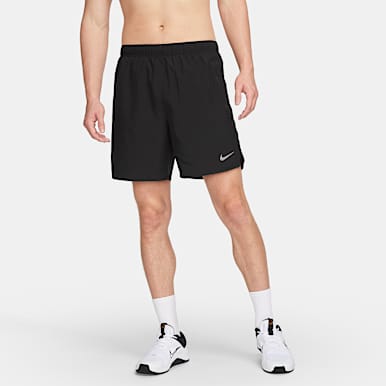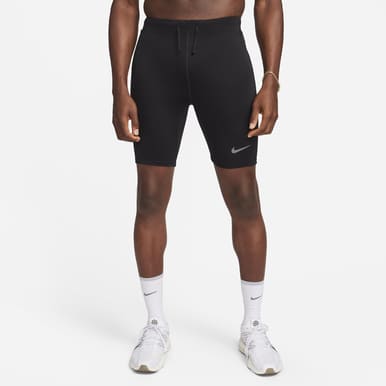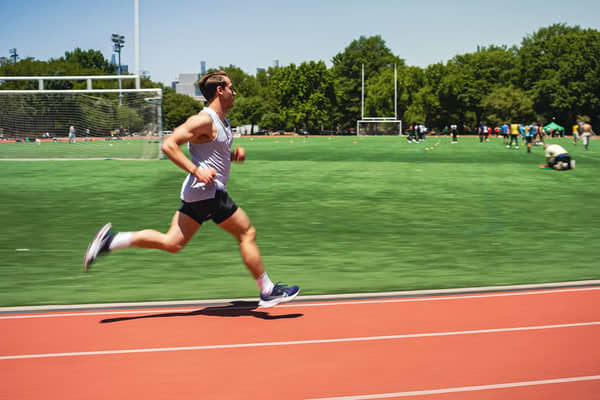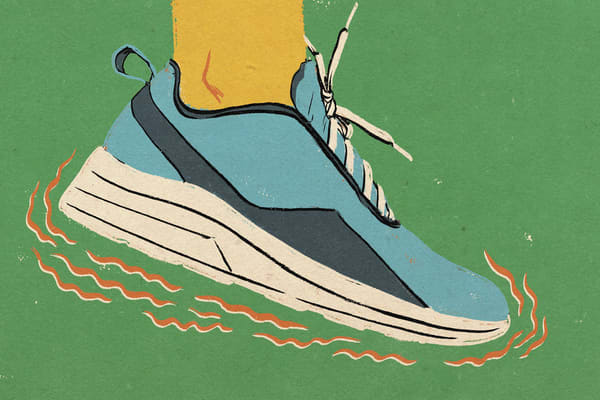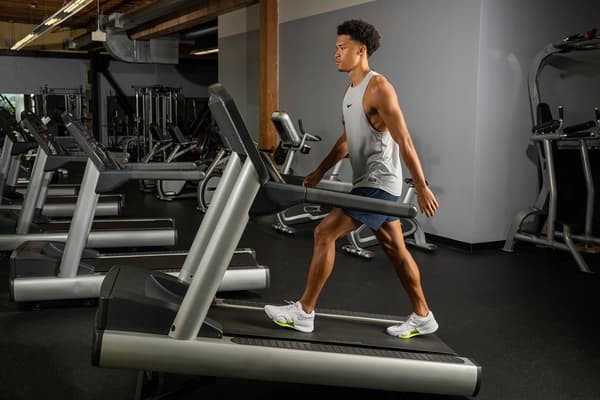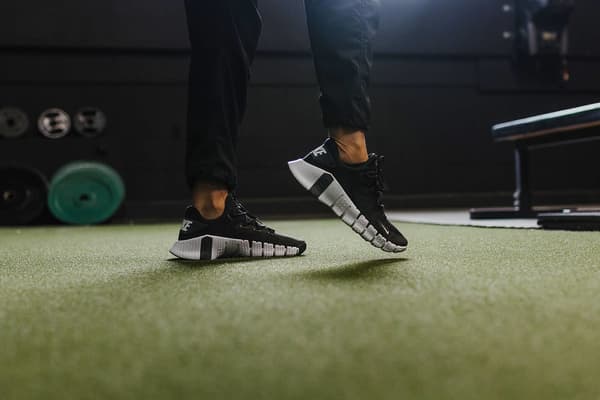Everything you need to know about running outside or on a treadmill
Sport & activity
Three experts explain the pros and cons of hitting the treadmill or pavement.
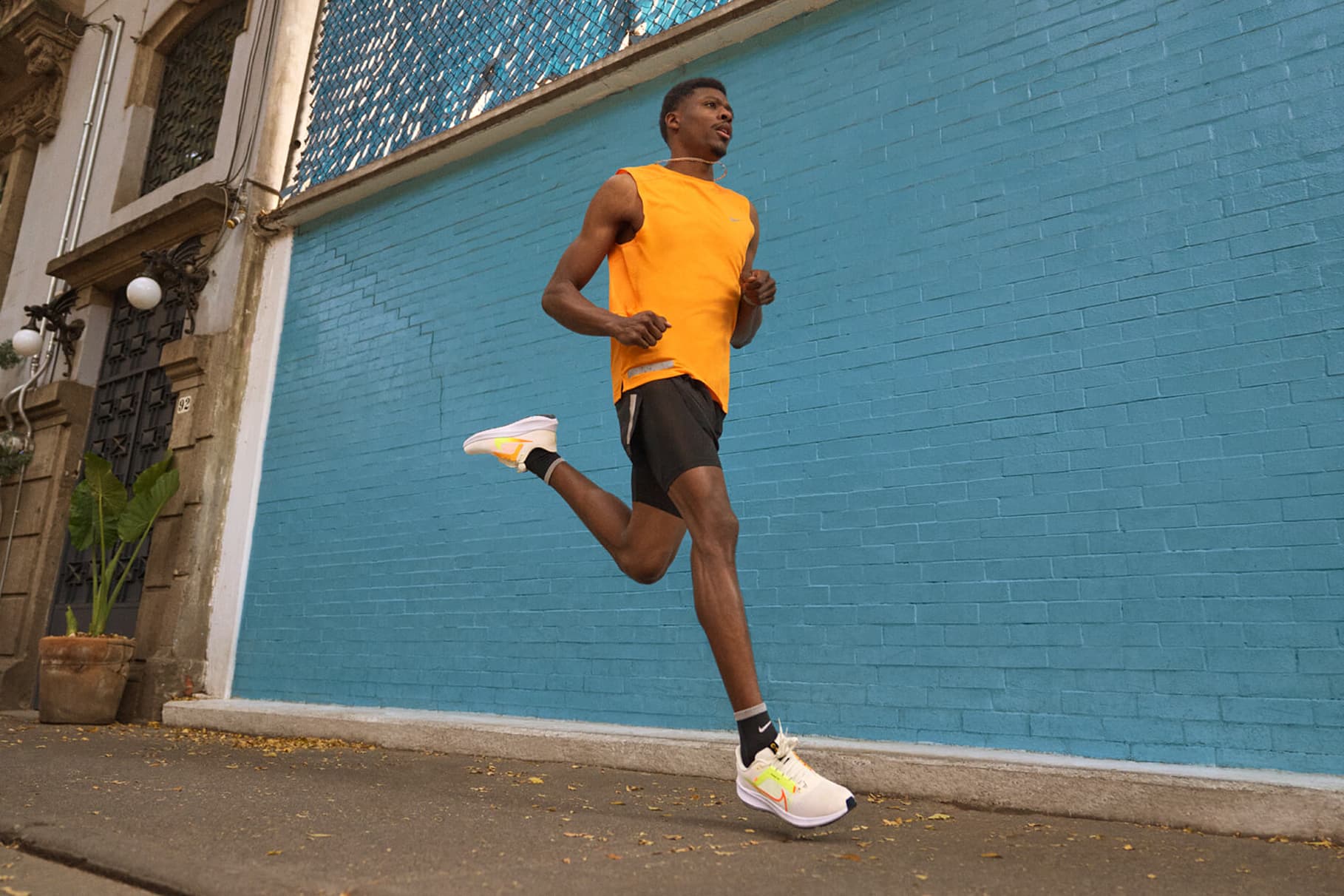
While ways to boost fitness and promote longevity continue to increase over the years, running will always be a mainstay of many people's workout routines. You can enjoy the benefits of running virtually anywhere you are, but is there more benefit to running outside on a road, trail or track versus running indoors on a treadmill?
The answer isn't simple; factors including how frequently you run, what type of training
you're doing and where you're located can help you make an informed decision of whether to run indoors or outdoors. For example, if you live in a warm climate and near a track, that may be the most easily accessible place to get your speed work in. But if you're surrounded by snow-laden terrain, taking your workout to a treadmill may be your safest bet. Below, find out everything you need to know about running outside versus on a treadmill.
What's the difference between running on a treadmill versus outside?
"Both treadmill and outdoor running have their benefits, and the choice between the two largely depends on individual preference and circumstance", David Jou, DPT, said.
"One of the main differences between running on a treadmill versus outside is the running mechanics (also known as form or technique) required for each", Yusuf Jeffers, NASM, CPT, said.
"When it comes to running outdoors, you have to create the necessary force to propel your body forwards, which requires strong and efficient backside mechanics, aka maintaining proper form", he explained. "Efficient backside mechanics also relates to what's happening with the muscles on the back side of your body like your hamstrings, glutes and calves, which help you create power", he added.
On a treadmill, some of this posterior work is done for you, since the belt automatically moves underneath you. One limitation of treadmill running is that, because the power is being generated by you and the treadmill, it may shorten your stride and potentially reduce the range of your front-side mechanics, specifically, how your form looks at the front of your body, and what's happening in relation to ankle dorsiflexion, hip flexion, knee flexion and your pelvis position, which should be neutral.

Benefits and limitations of running on a treadmill
"Treadmills are a great tool in a running repertoire", Jeffers said. He added that the key benefits of running on a treadmill include that they are often located in a climate-controlled room and they enable you to dictate and access variables that may not be readily available outside—such as controlling speed and adjusting the incline.
In addition, treadmill belts provide a level of cushion that the ground may not, which can help preserve bone and joint health over time. You can also walk on a treadmill as a form of active recovery.
"Running on a treadmill may be easier on your joints because the surface is typically flat and consistent, and the structure of the belt makes it lower-impact relative to running outdoors", Jou said. "More specifically, running on a treadmill is advantageous if you're recovering from injuries, or experience joint dysfunction and pain", he added.
"If you have cardiovascular conditions, balance issues, vertigo or dizziness, or are recovering from an operation or lower-body injury, consult a healthcare professional for guidance on whether running on a treadmill is the best option for you", Jou said.
"Treadmill running is considered a low-impact activity, but individual factors including—but not limited to—poor fitting footwear, pre-existing health conditions, and your running mechanics can influence the likelihood of getting injured", Jou said.
"Runner's knee, shin splints, stress fractures, Achilles tendonitis, plantar fasciitis and muscular imbalances can be exacerbated due to the repetitive nature and decreased variability of the terrain on the treadmill relative to road running", Jou said.
"Additionally, performing running workouts on a treadmill can be helpful for new runners because they're able to customise the incline and speed; control the pace and intensity of the workout which, in part, makes it easier to maintain a consistent speed; or practise interval training", Jou said. Not to mention, training in a controlled environment enables you to devote energy towards your workout as opposed to focusing on unpredictable external factors like the weather. "This, in theory, can result in more successful workouts", Jou added.
However, due to the belt's flat and consistent surface, running on a treadmill may not challenge certain muscle groups as effectively as running outside. Because of how linear and stable running on a treadmill is, you may not be prepared for the differences in the terrain outdoors. Before running outdoors, make note of the texture of the path, inclines and declines, and varying temperatures.
Due to variations of the outdoor terrain and inclines on the road, the ankle and foot stabilisers—including the anterior tibialis (the front part of your shin)—the calf muscles, and the hip abductors and adductors will be used differently than when running on the treadmill.
"While treadmill running can be a good starting point for runners, running outdoors engages a wider range of muscles, particularly in the legs, as you navigate uneven terrain and varying inclines", Jou said.
Additionally, people who exclusively run on the treadmill may have underdeveloped hamstrings, glutes, calves, hip stabilisers, and adductors and abductors (the muscles responsible for moving your legs in and out laterally) due to the homogeneity of running on a treadmill, specifically the flat surface of the belt, according to Jeffers.
"It is important to note that certain factors associated with running on a treadmill, like hip flexor tightness from the repetitive forward motion and weak glutes and a decrease in core activation from the lack of variation and demand of balance and stabilisation, can contribute to or worsen muscular imbalances such as lower cross syndrome", Jou said.
"To make a treadmill-run level of effort comparable to outdoor running demands, consider increasing the incline to 1.0", said Jason Machowsky, CSCS, RD, and exercise physiologist.
Benefits and limitations of running outside
"Conversely, running outdoors may help you become a stronger runner, given that you have to create the force between yourself and the ground in order to generate speed and power, versus relying on the treadmill to do this for you", Jeffers said.
"Running outdoors can also offer a greater sense of mental stimulation because you're experiencing varying scenery, nature, people and obstacles", Jou said. In general, exercise has been found to enhance cognitive function. What's more, research has also found that nature improves cognition and mental health. In fact, research has suggested that outdoor exercise has more benefits for the brain than exercising indoors. These benefits include improved attention, memory and inhibitory control—which involves controlling automatic urges like behaviour, thoughts and emotions.
Outdoor running may also set the scene for social interaction. For instance, you may choose to jog with a partner, friends or even a local running group. A 2022 study found that as the number of running partners significantly increases, so does the number of running sessions. And when runners were able to name a key co-runner, they reported that they received more social support to run and had a positive basis for social comparison.
In addition, training outdoors can help to prepare for any races you may have planned. To toe the starting line ultra-prepared, consider simulating the course of an upcoming race. For example, you can train for any long hills or sharp turns, Machowsky said, and depending if the race is close by, you can even train on different parts of the course, albeit safely—leave any road running for race day when streets are closed.
On the flip side, running outdoors can be challenging depending on where you're located. Additionally, learning how to pace yourself outdoors can be harder initially because you can't programme your pace as you would on a treadmill, and the terrain is constantly changing, but once you nail it, your runs will become more efficient. "Running outdoors on hard surfaces like concrete or tarmac can lead to joint and bone injury if you aren't strong enough or prepared for the workload", Jeffers said.
If you're concerned about joint and bone injury, Machowsky suggested running on soft outdoor surfaces such as grass, a turf field, running track or trail.
"You may also want to consider environmental challenges with outdoor running, which include changes in the terrain, wind and temperature, which could all impact your pace, workout intensity and performance overall", Jou said.
To help prevent joint and bone injury, try these two exercises Machowsky recommended.
1.Double- to Single-Leg Glute Bridge
A note from Machowsky: You should feel your glutes working, but there shouldn't be a strain or pain in the neck, back or knees.
- Lie on your back with your knees bent and your feet planted on the ground, hip-width apart. Exhale to lightly engage your abs.
- Engage your glutes by flexing them as you simultaneously push through your heels to lift your hips up off the ground. Imagine that you are pushing the outsides of your knees against a band to prevent them from collapsing inwards. (If you're a beginner, you can place a resistance band around your knees to prevent them from collapsing inwards.)
- Make sure you keep your hips even with one another and keep flexing your glutes throughout the entire movement.
- Hold for two to three seconds and then lower down to the starting position with control.
- From the starting position, draw your left knee into your chest.
- Engage your core and glutes and push through your right heel as you lift your hips up. Be sure you maintain alignment in both hips; one hip shouldn't be higher than the other.
- Hold for two to three seconds and then lower down to the starting position with control.
- Repeat the double-leg glute bridge and then the single-leg glute bridge on the left side.
- Complete two to three sets of eight to 12 reps.
2.Single-Leg Romanian Deadlift
- Start standing with your feet hip-width distance apart.
- Balance on your right leg as you create a soft bend in your left knee and slightly lift your left leg off the ground.
- Hinge at your hips (think about pushing your hips backwards), as your left leg extends behind you. Be sure you maintain a slight bend in your left knee and keep your foot, knee and hip in alignment. Both hip bones should be pointing down towards the ground.
- Hold for two to three seconds and then lower your leg down with control as you return to the starting position.
- Complete two to three sets of eight to 10 reps on each leg.
Final verdict: running on a treadmill vs. running outdoors
"Overall, both treadmill running and outdoor running can be effective forms of training, and the best choice for you depends on your goals and personal preferences", Jou said.
If you're unsure, Jou recommended working with a licensed physiotherapist specialising in sports performance, a running coach or a combination of both, to determine what's best for you.
Another path to identify the optimal modality for you? Assess your strengths and weaknesses—working with a run coach or physiotherapist can be especially useful here. Don't forget to focus on your strengths and weaknesses to be a well-rounded runner.
It's also important to consider your short-term and long-term goals. "For example, if you're a beginner training for a 5K and new to learning how to pace yourself, practising shorter intervals on the treadmill could help you learn what it feels like to run at a consistent pace", Jeffers said. If you're more experienced, you may want to work on uphill and downhill repeats outside to improve your power and running efficiency.
Jeffers said he generally recommends implementing both outdoor and treadmill running for most runners, "especially those runners who exclusively choose outdoors or treadmills while avoiding the other". For beginners, he typically recommends running outdoors for speed work and utilising the treadmill to build up your mileage. "There's no one-size-fits-all prescription to this, which is great in and of itself", Jeffers said.
For Machowsky, "getting the work in is kind of the most important thing", and then you can get more nuanced in terms of training location and determine what makes the most sense in terms of your goals, he added.
Finally, Jou recommended utilising what you have access to in order to stay motivated, emphasising that, in general, it's beneficial to incorporate both types of running into your routine to maximise overall fitness and performance.
Frequently asked questions
Is it better to run on a treadmill or outside?
One isn't better than the other. Your training environment is contingent upon your short-term and long-term goals and your personal preference.
Is running outside way harder than the treadmill?
Running outdoors can be harder than running on a treadmill because of environmental factors that are outside of your control such as the terrain, temperature and varied ascent and descent.
Words by Tamara Pridgett

Nike Run Club
Listen to the Guided Runs in the Nike Run Club App and run with some of the best coaches and athletes, like Eliud Kipchoge, Shalane Flanagan and Mo Farah. Our Guided Runs give you the guidance you need to listen to your body, adapt to your training plan and become your own best coach.
